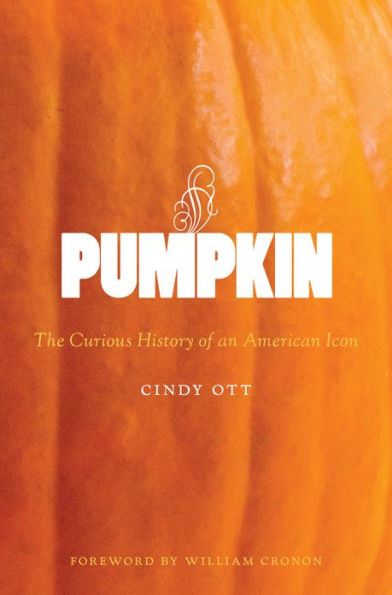Thanksgiving gathers us together. It’s a day to set aside our differences, reach for second helpings, and snore softly on cat hair–covered recliners. Indeed, we are united on this day by our shared love of French-fried onions, cranberry jelly, and those toasted marshmallows that encase sweet potatoes—delicate culinary nuances that don’t get a lot of […]
Pumpkin: The Curious History of an American Icon
Why do so many Americans drive for miles each autumn to buy a vegetable that they are unlikely to eat? While most people around the world eat pumpkin throughout the year, North Americans reserve it for holiday pies and other desserts that celebrate the harvest season and the rural past. They decorate their houses with pumpkins every autumn and welcome Halloween trick-or-treaters with elaborately carved jack-o'-lanterns. Towns hold annual pumpkin festivals featuring giant pumpkins and carving contests, even though few have any historic ties to the crop.In this fascinating cultural and natural history, Cindy Ott tells the story of the pumpkin. Beginning with the myth of the first Thanksgiving, she shows how Americans have used the pumpkin to fulfull their desire to maintain connections to nature and to the family farm of lore, and, ironically, how small farms and rural communities have been revitalized in the process. And while the pumpkin has inspired American myths and traditions, the pumpkin itself has changed because of the ways people have perceived, valued, and used it. Pumpkin is a smart and lively study of the deep meanings hidden in common things and their power to make profound changes in the world around us.Visit the author's website for more information: http://www.pumpkincurioushistory.com/just-another-squash-12000-bce-to-1600.html
"1110993844"
Pumpkin: The Curious History of an American Icon
Why do so many Americans drive for miles each autumn to buy a vegetable that they are unlikely to eat? While most people around the world eat pumpkin throughout the year, North Americans reserve it for holiday pies and other desserts that celebrate the harvest season and the rural past. They decorate their houses with pumpkins every autumn and welcome Halloween trick-or-treaters with elaborately carved jack-o'-lanterns. Towns hold annual pumpkin festivals featuring giant pumpkins and carving contests, even though few have any historic ties to the crop.In this fascinating cultural and natural history, Cindy Ott tells the story of the pumpkin. Beginning with the myth of the first Thanksgiving, she shows how Americans have used the pumpkin to fulfull their desire to maintain connections to nature and to the family farm of lore, and, ironically, how small farms and rural communities have been revitalized in the process. And while the pumpkin has inspired American myths and traditions, the pumpkin itself has changed because of the ways people have perceived, valued, and used it. Pumpkin is a smart and lively study of the deep meanings hidden in common things and their power to make profound changes in the world around us.Visit the author's website for more information: http://www.pumpkincurioushistory.com/just-another-squash-12000-bce-to-1600.html
24.95
In Stock
5
1

Pumpkin: The Curious History of an American Icon
336
Pumpkin: The Curious History of an American Icon
336
24.95
In Stock

Product Details
| ISBN-13: | 9780295993324 |
|---|---|
| Publisher: | University of Washington Press |
| Publication date: | 08/01/2013 |
| Series: | Weyerhaeuser Environmental Books |
| Pages: | 336 |
| Product dimensions: | 5.50(w) x 8.60(h) x 1.00(d) |
| Age Range: | 18 Years |
About the Author
What People are Saying About This
From the B&N Reads Blog
